1.
Introduction
The importance of existence and uniqueness theorems for initial value and boundary value problems (IVP and BVP) involving the classical derivative operator is indisputable because, without them, one cannot understand modeled systems correctly and make predictions how they behave. Recently, with the popularity of fractional derivative operators such as Riemann-Liouville (R-L), Caputo (C), etc., the equations involving these operators have begun to be studied in detail (See, [1,2,3,4,5,6]). However, such a generalization leads to some difficulties and differences especially in R-L case. For instance, unlike the initial value problems involving the classical derivative, the existence of continuous solution to some IVPs in the sense of R-L derivative strictly depends on the initial values and smoothness conditions on nonlinear functions in right-hand side of equations in IVPs. For example, as shown in [7], the following initial value problem for R-L derivative of order σ∈(0,1)
has no continuous solution when f is continuous on [0,T]×R. Therefore, this equation was investigated when subjected to different initial values (See, Theorem 3.3 in [1]). By considering the aforementioned remark, we investigate the existence and uniqueness of solutions to the following problem
where σ∈(1,2), b∈R, Dσ represents the Riemann-Liouville fractional derivative of order σ, which is given by
and f fulfills the following condition:
(C1) Let f(x,t1,t2)∈C((0,T]×R×R) and xσ−1f(x,t1,t2)∈C([0,T]×R×R),
where C(X) represents the class of continuous functions defined on the subspace X of R3.
The equation in (1.2) was first considered by Yoruk et. al. [8], when the second initial value is also homogeneous (b=0) and the right-hand side function is continuous on [0,T]×R×R. They gave Krasnoselskii-Krein, Roger and Kooi-type uniqueness results. As seen from condition (C1), the equation in (1.2) has a singularity at x=0. Such singular equations involving R-L and Caputo derivatives were recently investigated in [7,9,10,11,12] and they proved local or global existence theorem for initial value problems involving singular equations. In the investigation of existence of solutions to these problems, converting the problem into the Volterra-type integral equation is one of the referenced tools. These integral equations have weakly and double singularities since the corresponding fractional differential equations are singular. For this reason, some new techniques or lemmas had to be developed to reveal the existence and uniqueness of solutions to integral equations (See for example [10,11]). In this paper, we also encounter a Volterra-type integral equations having a single singularity when we transform the problem (1.2) into a integral equation. For the uniqueness of solutions to the integral equation we need to generalize the definitions and methods previously given in [7,8,13] and use the tools of Lebesgue spaces such as Hölder inequality. These uniqueness theorems are the type of Nagumo-type, Krasnoselskii-Krein and Osgood which are well-known in the literature (See, [13,14,15,16]) Moreover, we give a Peano-type existence theorem for this problem as well.
2.
Preliminaries
We first give definition of the space of functions where we investigate the existence of solutions to the problem (1.2). The space is defined below as in [17] :
Theorem 2.1. The space of continuous functions defined on [0,T], whose R-L fractional derivative of order σ−1, 1<σ<2 are continuous on [0,T] is a Banach space when endowed with the following norm:
where ||.||∞ is the supremum norm defined on the class of continuous functions. This space will be denoted by Cσ−1([0,T]).
According to this space, we define R-L integral and R-L derivative of higher order [11]. The lower terminal points of integrals in their formulas will be taken as zero.
Definition 2.1. The R-L integral of order σ>0 of a function ω(x)∈C0[0,T] is defined for all x∈[0,T] by
Definition 2.2. For 1<σ<2 and ω(x)∈Cσ−1[0,T] with Dσ−1ω(x)∈C1(0,T]∩L1[0,T] the R-L fractional derivative Dβω is defined for all x∈(0,T] by
The local existence of solutions to problem (1.2) will be proved with the aid of Schauder fixed point theorem [18]:
Theorem 2.2. Let C be a closed, bounded, convex subset of a Banach space X:={u:I→R continuous:I⊂R closed and bounded interval}. If operator S:C→C is continuous and, if S(C) is an equicontinuous set on I, then S has at least one fixed point in C.
3.
Main results
The one of mathematical tools used for showing the existence and uniqueness of the desired type of solution to a given initial or boundary value problem is first to convert them into an integral equation. One investigates the existence and uniqueness of the solution to the integral equation instead of the associated problem. Here, we follow this way by taking the aid of the lemma given below:
Lemma 3.1. Under condition (C1), if ω∈Cσ−1[0,T] is a solution of problem (1.2), then ω∈Cσ−1[0,T] is a solution of the following integral equation
and, vice versa.
Proof. We assume that ω∈Cσ−1[0,T] is a solution of problem (1.2). By condition (C1), we have f(x,ω(x),Dσ−1ω(x)) is continuous on (0,T] and xσ−1f(x,ω(x),Dσ−1ω(x)) is continuous on [0,T]. It means that f(x,ω(x),Dσ−1ω(x)) is integrable, i.e f(x,ω(x),Dσ−1ω(x))∈C(0,T]∩L1[0,T]. Then, by integrating the both sides of the equation in (1.2) and using the relation IDσ=IDDσ−1
is obtained. From here, by integration of the both sides of last equation and by use of IDσ−1=IDI2−σ we have
where we used Dσ−1ω(0)=b and I2−σω(0)=0 since ω(0)=0.
If the operator Iσ−1 is applied to the both sides of (3.2), then by semigroup and commutative property of R-L derivative we get
for all x∈[0,T]. Differentiating the both sides of (3.3), we have
which is the equivalent to the integral Eq (3.1).
Now we suppose that ω∈Cσ−1[0,T] is a solution of integral Eq (3.1), and let us show that ω is a solution of the problem (1.2). If Dσ is applied to the both sides of (3.1), and then, if
is used, then one can observe that ω∈Cσ−1[0,T] satisfies the equation in (1.2). Moreover, let us prove that ω∈Cσ−1[0,T] also fulfills initial value conditions. By change of variables and condition (C1) we have
since the integral is finite. Thus ω satisfies the first initial condition in (1.2).
Now let us show that ω provides the second initial condition in (1.2). If Dσ−1 is applied to both sides of (3.1), and if the relation Dσ−1Iσh(x)=Ih(x) is used, then we can first get
From here, by passing the limit as x→0+, we then obtain
since 2−σ>0 and the integral is finite due to the continuity of tσ−1f(t,ω(t),Dσ−1ω(t)) on [0,T]. Consequently, it has been shown that any solution of (3.1) provides the problem (1.2) if condition (C1) is assumed to be satisfied.
Theorem 3.1 (Existence). Let condition (C1) be satisfied, and assume that there exist positive real numbers r1, r2 and M such that |xσ−1f(x,ω,v)|≤Mfor all(x,ω,v)∈I=[0,T]×[−r1,r1]×[b−r2,b+r2]. Then problem (1.2) admits at least one solution in Cσ−1[0,T0 ], where
and
Proof. As it is known from Lemma 3.1, solutions of problem (1.2) are solutions of integral equation (3.1) as well. Moreover, the fixed points of the opeator S:Cσ−1[0,T0 ]→Cσ−1[0,T0 ] defined by
interfere with solutions of the integral equation. For this reason, it is sufficient to prove that operator S admits at least one fixed point. For this, it will be verified that operator S satisfies the hypotheses of Schauder fixed-point theorem. Let us start with showing the following inclusion to be valid:
where
is a closed compact subset of Cσ−1[0,T0 ]. Accordingly to the norm on Cσ−1[0,T0 ], upper bounds of ‖ and \left\| D^{\sigma-1}\mathcal{S}\omega(x)-b\right\|_{\infty} can be determined as follows:
and
From (3.10)) and (3.11),
is obtained. Taking supremum over [0, T_0] for a T_0 > 0 for the right hand-side of the above equation,
can be written, where \alpha\in\Omega = \left\lbrace \sigma-1, 1, 2-\sigma\right\rbrace. \alpha depends on values of b, \mathcal{M}, \sigma, r. To determine T_0 and \alpha , let
If T_0 ^{\alpha} = \frac{r}{C(b, \sigma, \mathcal{M})} < 1, then it is observed that T_0 < 1 for any \alpha\in \Omega. If T_0 ^{\alpha} = \frac{r}{C(b, \sigma, \mathcal{M})}\geq1, it must be T_0 \geq 1 for any \alpha\in \Omega. Thus,
where
and
As a result, for all cases we obtain
which is the desired.
Now, let us prove the equicontinuity of \mathcal{S}(B_{r})\subset C^{\sigma-1} [0, T_{0}~]. Since the composition of uniformly continuous functions is so as well, the function x^{\sigma-1}f(x, \omega(x), D^{\sigma-1}\omega(x)) is uniformly continuous on [0, T_{0}~]. Because for any \omega\in B_{r}, both \omega(x) and D^{\sigma-1}\omega(x) and x^{\sigma-1}f(x, \omega, v) are uniformly continuous on I, respectively. Therefore, for given any \epsilon > 0, one can find a \delta = \delta(\epsilon) > 0 so that for all x_{1}, x_{2}\in [0, T_{0}~] with \left|x_{1}-x_{2}\right| < \delta it is
where K = \max\left(\frac{1}{T_{0}~\Gamma(2-\sigma)}, \frac{2-\sigma}{T_{0}~^{2-\sigma}}\right). It follows that
where h(x) = x^{\sigma-1}f\left(x, \omega\left(x\right), D^{\sigma-1}\omega(x) \right). This implies that \mathcal{S}(B_{r}) is an equicontinuous set of C^{\sigma-1} [0, T_{0}~].
Finally, the continuity of \mathcal{S} on B_{r} will be proven. Assume that \left \{\omega_{k}\right \}_{k = 1}^{\infty}\subset B_{r} is a sequence with \omega_{k}\stackrel{C^\sigma [0, T_{0}~]}{\rightarrow } \omega as k\rightarrow \infty. Then, one can easily conclude that \omega_{k} and D^{\sigma-1}\omega_{k}(t) converges uniformly to \omega and D^{\sigma-1}\omega(t), respectively. With these and the uniform continuity of x^{\sigma-1}f(x, \omega, v) on I = \left[0, T\right]\times\left[-r_{1}, r_{1}\right] \times \left[b-r_{2}, b+r_{2}\right], it leads to
In conclusion, since hypotheses of Theorem 2.2 are fulfilled, it implies that operator \mathcal{S} admits at least one fixed point in C^{\sigma-1} [0, T_{0}~], which is a solution of problem (1.2) as well.
The mean value theorem for R-L derivative of order \sigma\in (0, 1) was correctly given by [7]. Now, its counterparts for order \sigma\in (1, 2) is given as follows:
Lemma 3.2. Let \sigma \in (1, 2) and \omega\in C^{\sigma-1}\left(\left[0, T\right]\right). Then, there is a function \mu:[0, T]\to [0, T] with 0 < \mu(x) < x so that
is satisfied.
The lemma can be proved by following the way used in [7] and so we omit it here. With the aid of this lemma we can obtain the Nagumo-type uniqueness:
Theorem 3.2. (Nagumo type uniqueness) Let 1 < \sigma < 2, 0 < T < \infty and let condition (C1) be satisfied. Moreover, assume that there exists a positive real number L\leq \frac{2-\sigma}{\max\left( T, T^{2-\sigma}\right) (1+\Gamma(3-\sigma))} such that the inequality
is fulfilled for all x\in[0, T] and for all \omega{i}, v{i}\in\mathbb{R} with i = 1, 2. Then, (1.2) has at most one solution in the space of C^{\sigma-1}(\left[0, T_0\right]).
Proof. We have just showed the existence of the solution to problem (1.2) in the previous theorem. For the uniqueness, we first assume that (1.2) admits two different solutions such as \omega_{1} and \omega_{2} in the space of C^{\sigma-1}(\left[0, T_0\right]). Let us define a function \Phi(x) to be in the form
Since \omega_{1}, \omega_{2}\in C^{\sigma-1}(\left[0, T\right]), the continuity of \Phi(x) on x\in (0, T_0] can obviously be seen. For its continuity at x = 0,
where H(x, \omega(x)) = x^{\sigma-1}f\left(x, \omega\left(x\right), D^{\sigma-1}\omega(x ) \right) and we made the change of variable t = x\eta and used condition (C1), respectively. Consequently, \lim_{x\to 0^{+}}\Phi(x) = 0 = \Phi(0).
The fact that \Phi(x)\geq 0 on [0, T] allows us to choose a point x_{0}\in (0, T] so that
By using the mean value theorem given by Lemma 3.2
is obtained for x_{1}\in (0, x_{0}).
Secondly, for the estimation of \left|D^{\sigma-1}\omega_{1}(x_{0})-D^{\sigma-1}\omega_{2}(x_{0})\right|, we have from the well-known integral mean theorem for the classical calculus
where x_{2}\in (0, x_{0}).
We assign x_{3} as one of the points x_{1} and x_{2} so that \left| H(x_{3}, \omega_{1}(x_{3}))-H(x_{3}, \omega_{2}(x_{3}))\right| : = \max\left(\left| H(x_{1}, \omega_{1}(x_{1}))-H(x_{1}, \omega_{2}(x_{1}))\right|, \left| H(x_{2}, \omega_{1}(x_{2}))-H(x_{2}, \omega_{2}(x_{2}))\right| \right).
Thus, from (3.17) and (3.18), we have
since L\leq \frac{2-\sigma}{\max\left(T, T^{2-\sigma}\right)~~ (1+\Gamma(3-\sigma))}. Repeating the same procedure for the point x_{3}, it enables us to find some points x_{6}\in(0, x_{3}) so that 0 < \Phi(x_{0})\leq\Phi(x_{3})\leq \Phi(x_{6}). Continuing in the same way, the sequence \left\{x_{3n}\right\}_{n = 1}^{\infty}\subset [0, x_{0}) can be constructed so that x_{3n}\to 0 and
However, the fact that \Phi(x) is continuous at x = 0 and x_{3n}\to 0 leads to \Phi(x_{3n})\to \Phi(0) = 0, and this contradicts with (3.19). Consequently, IVP (1.2) possesses a unique solution.
Theorem 3.3. (Krasnoselskii-Krein type uniqueness) Let 1 < \sigma < 2 and T^{*}_{0} = \min\left\lbrace T_{0}~, 1 \right\rbrace, where T_0 is defined by (3.7). Let condition (C1) be fulfilled. Furthermore, suppose that there exist a L > 0 and an \alpha \in (0, 1) so that
holds for all x\in[0, T] and for all \omega_{i}, v_{i}\in\mathbb{R} with i = 1, 2, and that there exist C > 0 satisfying (1-\sigma)(1-\alpha)-L(1-\alpha)+1 > 0 such that
holds for all x\in[0, T] and for all \omega_{i}, v_{i}\in\mathbb{R} with i = 1, 2. Then, problem (1.2) has a unique solution in the space of C^{\sigma-1}(\left[0, T^{*}_{0}\right]).
Proof. As claimed in the previous theorem, we first assume that problem (1.2) has two different solutions such as \omega_{1}(x) and \omega_{2}(x) in C^{\sigma-1}(\left[0, T^{*}_{0}\right]). However, by contradiction, we will show that they are indeed equal. For this, let us first define \Phi_{1}(x) = \left|\omega_{1}(x)-\omega_{2}(x)\right| and \Phi_{2}(x) = \left|D^{\sigma-1}\omega_{1}(x)-D^{\sigma-1}\omega_{2}(x)\right| and try to find estimates for each functions by using condition (C1) and inequality (3.21). Hence, we first have
where we used Hölder inequality with q > 1 satisfying (1-\sigma)q+1 > 0 and p = q/(q-1), and \Omega(x) is defined by
From here, we have the following estimation
where C is not specified here and throughout the proof. In addition to this, the upper bound for \Phi_{2}(x) can be found as follows:
From here,
is then obtained. By using estimations in (3.22) and (3.23) in the derivative of \Omega(x) we have
If we multiply the both sides of the above inequality with (1-\alpha)\Omega^{-\alpha}(x),
is then obtained. Integrating the both sides of the inequality over [0, x], we get
since \Omega(0) = 0. Consequently, this leads to the following estimation on \Omega(x)
By considering (3.22) and (3.23) together with (3.25), one can conclude that
or
and
or
since \frac{p+q}{pq} = 1.
Let us now define
where L(1-\alpha) < 1+(1-\sigma)(1-\alpha). If \Phi_{1}(x) = \max\left\lbrace \Phi_{1}(x), \Phi_{2}(x)\right\rbrace, then from (3.26) we get
or in the case of \Phi_{2}(x) = \max\left\lbrace \Phi_{1}(x), \Phi_{2}(x)\right\rbrace, by the inequality (3.27) we have the following
In both cases, \Psi(x) is continuous on [0, T^{*}_{0}] and \Psi(0) = 0. Let us now show that \Psi(x)\equiv 0 on [0, T^{*}_{0}]. For this, suppose otherwise and let \Psi(x)\not\equiv 0. This means \Psi(x) > 0, and from its continuity one can say that there exists a point x_{1}\in [0, T^{*}_{0}] so that \Psi(x) takes its maximum value at that point. Thus, let
By assuming \Psi(x) = x^{-L}\Phi_{1}(x),
is obtained for t\in [0, x_{1}). However, we get to a contradiction.
On the other hand, when \Psi(x) = x^{-L}\Phi_{2}(x), we get
which is contraction as well.
Consequently, \Psi(x) vanishes identically on [0, T^{*}_{0}]. This gives us the uniqueness of solutions to the considered problem.
Theorem 3.4 (Osgood-type uniqueness). Let 1 < \sigma < 2, and T_0 be defined by (3.7), and let condition (C1) be satisfied. Furthermore, suppose that the equality
is fulfilled for all x\in[0, T] and for all \omega_{i}, v_{i}\in\mathbb{R} with i = 1, 2, where p > 1 is conjugate of q > 1 satisfying 1+(1-\sigma)q > 0 and
Moreover, assume that g is a continuous, non-negative and non-decreasing function in \left[0, \infty\right) so that g(0) = 0 and it satisfies
for any \gamma\in\mathbb{R}. Then, (1.2) has a unique solution in the space C^{\sigma-1}(\left[0, T_{0}~\right]).
Proof. As made in previously given uniqueness theorems, we assume that there exist two different solutions such as \omega_{1}(x) and \omega_{2}(x) to problem (1.2) in C^{\sigma-1}(\left[0, T^{*}_{0}\right]). Moreover, let \Phi_{1}(x) = \left| \omega_{1}(x)-\omega_{2}(x)\right| and \Phi_{2}(x) = \left| D^{\sigma-1}\omega_{1}(x)-D^{\sigma-1}\omega_{2}(x)\right|. At first, we get the estimation on \Phi_{1}(x) as follows:
where we used the inequality (3.30), Hölder inequality and the assumption on C, respectively. From here, it follows that
Similarly to above, we have
This leads to
Now, set
and assume that \Psi(x) > 0 for x\in (0, T_{0}~]. We will show that it can not be possible under assumptions.
From the definition of \Psi(x) one easily conclude that for each x\in [0, T_0], it is \Phi^{p}_{1}(x)+\Phi^{p}_{2}(x)\leq \Psi(x) and there exists a x_{1}\leq x so that \Psi(x) = \Phi^{p}_{1}(x_{1})+\Phi^{p}_{2}(x_{1}). Then, from estimations (3.33)–(3.35) and from the fact that g is non-decreasing function
is then obtained. It can be seen that \Psi(x)\leq \Psi_{*}(x). Moreover, we have
for all x\in [0, T_0]. From this fact, for sufficiently small \delta > 0, we have
Furthermore, by changing variables u = \Psi_{*}(x) in the above integral and by using the continuity of \Psi_{*}(x) and \Psi_{*}(0) = 0 , we have
for sufficiently small \epsilon > 0 with \epsilon = \Psi_{*}(\delta) and for \gamma = \Psi_{*}(T_{0}~). However, this contradicts with the assumption on g given in (3.31). Consequently, \Psi(x) = 0 for x\in [0, T_{0}~], i.e. \omega_{1} = \omega_{2}.
Remark 3.1. It must be pointed out that, as noted in Theorem 1.4.3 in [13], the condition that function g(u) is non-decreasing can be dropped.
Example 3.1. Let us consider the following problem
with initial conditions \omega(0) = 0 and D^{\sigma-1}\omega\left(x\right)|_{x = 0} = 1. Let T = 1 in Theorem 3.1. Then, \mathcal{M} = \max_ {(x, u, v)\in [0, 1]\times [0, 1/e]\times [0, 1/e]} \left|x^{\frac{1}{3}}f(x, \omega, v) \right|\cong \frac{2}{e}, C(b, \sigma, \mathcal{M}) = C(1, \frac{4}{3}, \frac{2}{e})\cong 3.2 and T_{0}~ = \frac{r}{C(b, \sigma, \mathcal{M})}\cong 0.22. Hence, problem (3.37) has a solution in C^{\frac{1}{3}}(\left[0, 0.22 \right]). Now, we investigate the uniqueness of the solution to the problem in C^{\frac{1}{3}}(\left[0, 0.22 \right]). Let the function g in the previous theorem defined by
It is obvious that g is positive for u > 0 . Since g'(u) = -\frac{1}{2\sqrt{u}}\left(1+\ln(\sqrt{u})\right) > 0 for 0 < u\leq 1/e^{2}, it is non-decreasing. Also,
for any \gamma\in\mathbb{R}, which can be seen by considering the inequality \frac{1}{g(u)} = -\frac{1}{\sqrt{u}\ln\sqrt{u}}\leq \frac{1}{u} in the neighborhood of u = 0 and the divergence of the integral \lim_{\epsilon\to 0^{+}}\int_{\epsilon}^{\gamma}\frac{du}{u} and by applying comparison test. Moreover, by using the concavity of the nonlinear function f with respect to second and third variables, we have
where v_{i} = D^{\frac{1}{3}}\omega_{i} for i = 1, 2, p = q = 2 and
Hence, assumptions of Theorem 3.4 are satisfied. So, the problem has a unique solution in C^{\frac{1}{3}}(\left[0, 0.22 \right]).
4.
Conclusions
In this research, we gave some sufficient conditions for the existence and uniqueness of a problem involving a nonlinear differential equations in the sense of R-L derivative when the right-hand side function has a discontinuity at zero. We presented an example associated with two theorems. Considering the literature, these results can be generalized and improved. Besides, one can obtain another uniqueness results for this problem as well.
Conflict of interest
There is no conflict of interest.











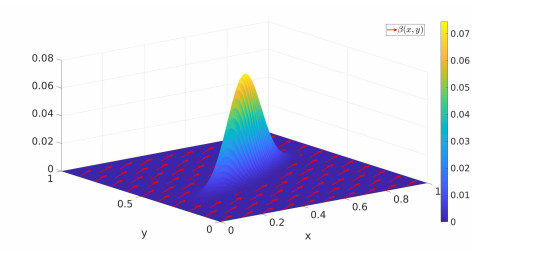

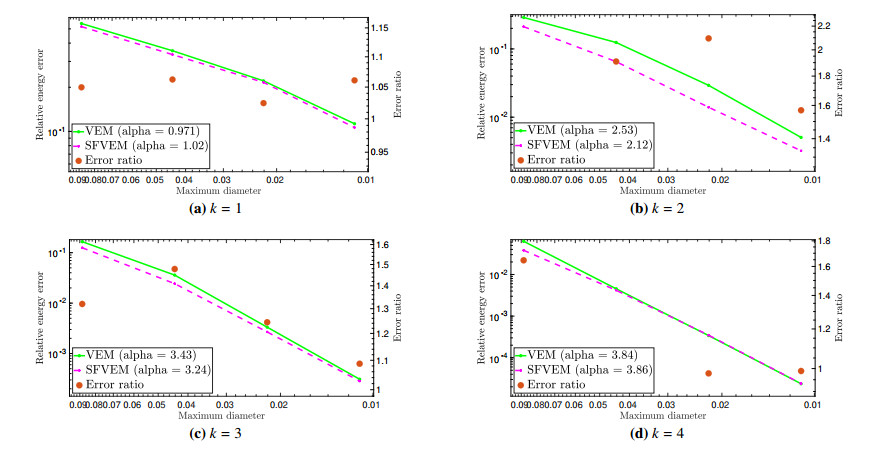
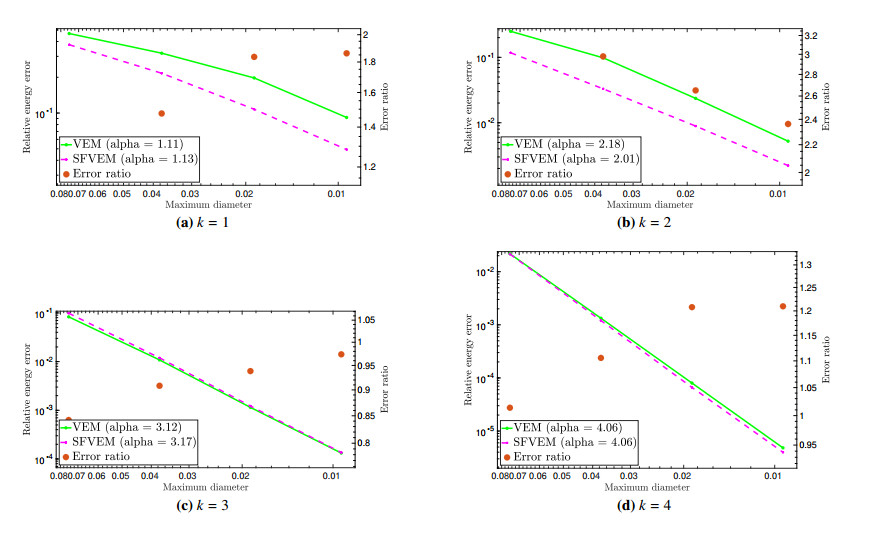
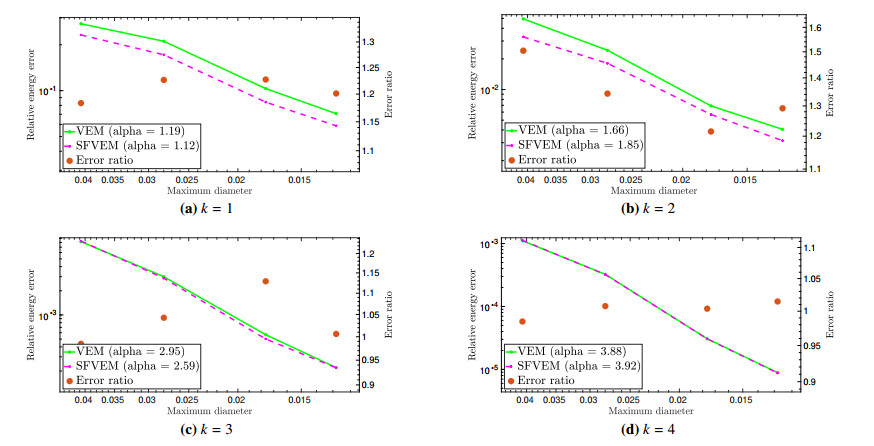
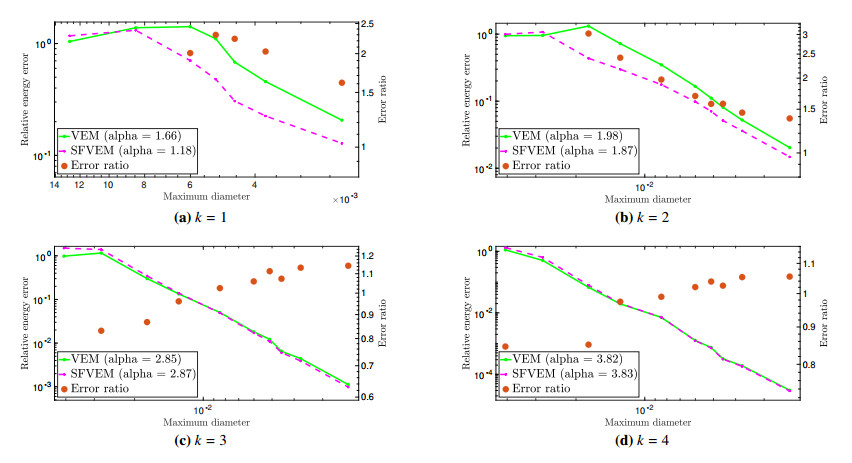
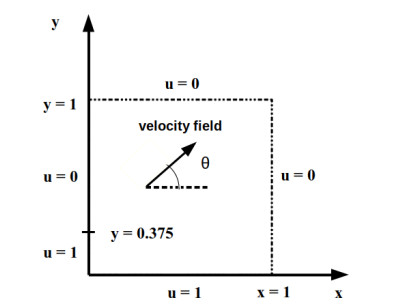
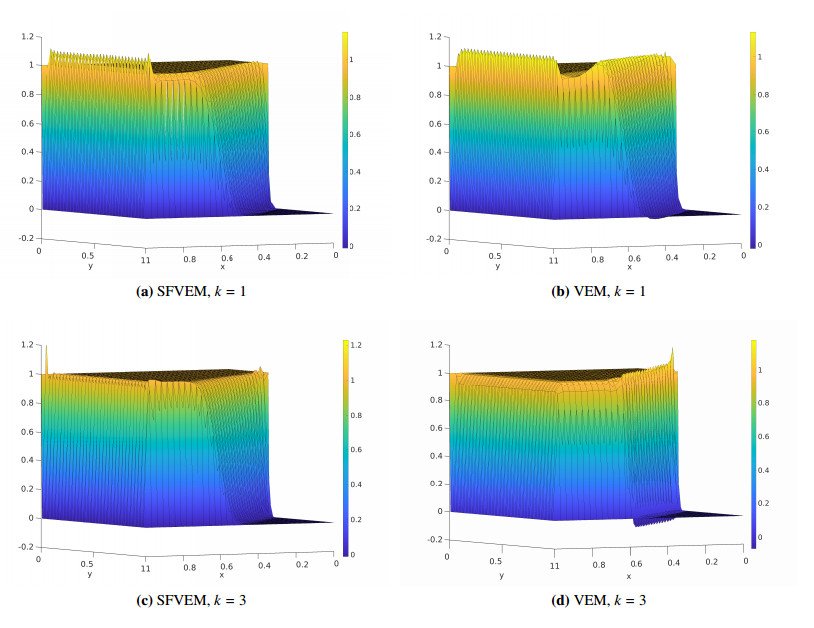


 DownLoad:
DownLoad: